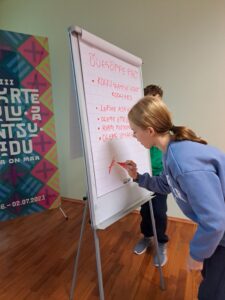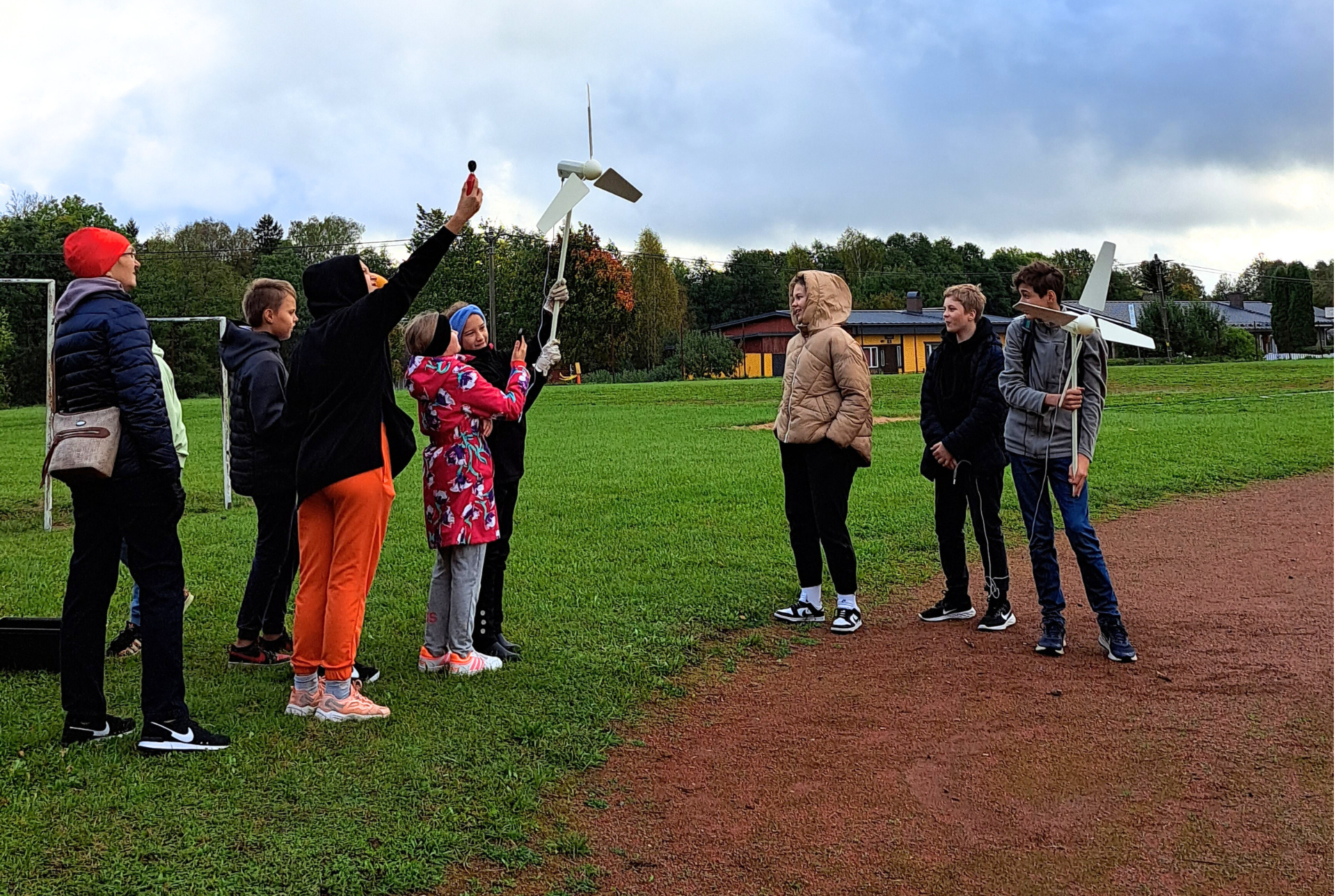“The most important thing that I learned during the outdoor learning day is teamwork and measuring wind speed. The more we work as a team, the better it functions.”
(Grade 7 student)
Where would you build a wind turbine today? – that was the challenge the Huvi team presented in October to the 5th and 7th-grade students of Oskar Luts Palamuse School in Tartumaa. Combining the different wind turbine project tasks from grades 1 through 9 in the STEAM framework, we aimed to introduce students to the charms (and challenges) of engineers’ and scientists’ work within a school learning day.
Our day was structured as follows:
- Establishing outdoor learning pact
- Introducing the wind turbine challenge
- Finding solutions
- Presenting the results
Outdoor Learning Pact
Walking outdoors during study or recess time requires practice and adaptation, just like any other new aspect in our lives. We recommend that everyone starting outdoor learning establishes the rules in collaboration with students, thus making outdoor activities smoother. As Palamuse School is a member of the Schools in Motion program, going outdoors during breaks is a natural part of the school day. Parents are informed what clothes to prepare for children, and students are skilled at managing activities outdoors. Hence, reaching a joint agreement on outdoor learning rules was straightforward. Through an exciting discussion, an outdoor learning pact was established, which, among other things, stated that:
- The common meeting point is in front of the school
- We are careful in outdoor activities
- We respect our team members
- We are polite

Defining the problem which needs to be solved: where to build a wind turbine today?
One of the foundations of a STEAM-based approach is to define a specific problem and set goals based on it. The focus question inspires students to find solutions for problems in project-based learning. What is the best location around the school to build a wind turbine today? It only applies for today because conditions and circumstances are changing. Of course, this kind of research could be adapted for a longer period of time (including long-term observation of variables and situations), depending the learning much further. However, this time, the focus was on finding a solution to the problem within a few hours.
We explore and experiment, fail and experiment again and finally succeed.
During the process of research and exploring, students investigated wind conditions as well as the size, position, and number of wind turbine blades. Consecutively, they designed their own blades for the wind turbine and set them to work. Once the wind turbine was operational, it generated energy, allowing students to charge their phones. The students’ feedback showed they greatly enjoyed being involved in experiments.
“The best part of the project was being able to try things out myself.”
“I liked making those rotor blades in this project. It was just fun.”
Many questions arose during the experiment. The most exciting moment was probably when the wind turbine started actually draining the phone’s battery. Why? What’s happening? Together, we learned that the wind turbine’s rotational direction is crucial, but for that, the blades need to be correctly angled to the wind. A new experiment.
“I also liked it when you let us decide which option would be better; you didn’t want us to feel uncomfortable.”
Throughout the project, learning outdoors developed a sense of teamwork, collaboration skills, and mutual respect for each other.
“The most important knowledge I’ll take away from today is getting along with others and also listening to others’ opinions.”
Scientists share the results with other scientists.
To conclude the day with dignity, we held a quick mini-science conference where groups presented their solutions. Collectively, it was concluded that the best place to build the wind turbine today would be on the school’s stadium. But then where to practice sports? Or perhaps keep the stadium and build the wind turbine in the second-best location? Maybe even a solar park? Enough questions and discussion topics for our next meetings. In any case, we take away a compliment because when a 14-year old student says that the activities were mostly cool, we can really give ourselves a pat on the back.
“I really liked that we were outdoors. The activities were mostly cool.”



